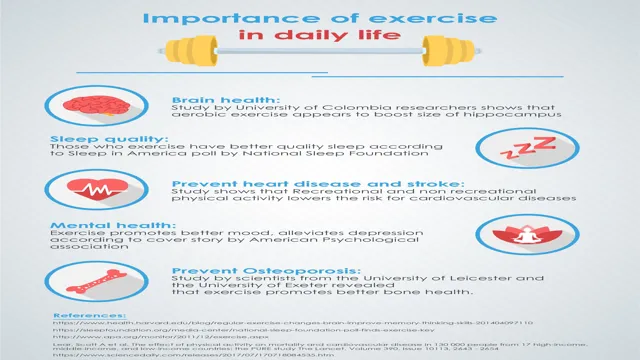As parents, we all want our kids to be healthy and happy. Teaching our children about health and fitness is one of the best ways to ensure they develop good habits early on in life. Not only is it crucial for their physical well-being, but it also impacts their mental and emotional health.
Kids who learn about health and fitness early on are more likely to lead a healthier lifestyle as adults. In this blog, we’ll discuss the importance of teaching kids about health and fitness and how we can help develop healthy habits that last a lifetime. So, let’s dive in!
Benefits of Physical Activity for Children
When it comes to health and fitness articles for kids, one of the most important topics to cover is the benefits of physical activity for children. Regular exercise not only helps kids maintain a healthy weight, but it also improves their muscle and bone strength, endurance, and flexibility. It can also reduce their risk of developing chronic diseases such as obesity, type 2 diabetes, and heart disease.
Exercise has also been shown to enhance cognitive function and academic performance in children. Encouraging your child to engage in physical activity doesn’t have to be difficult – it can be as simple as taking a family walk or bike ride, playing tag, or signing them up for a sports team. By prioritizing physical activity in your child’s routine, you’ll be setting them up for a healthy and happy future.
Higher energy levels and better sleep
Physical activity is incredibly important for children, and there are many benefits that come with it. One of the most important benefits is the increased energy levels that children experience. When kids engage in physical activities like running, swimming, or playing team sports, their bodies produce endorphins that give them a natural boost of energy.
This added energy can last for several hours, making children feel more productive and awake throughout the day. Additionally, physical activity is also linked to better sleep. When a child expends energy during the day through exercise, they are more likely to fall into a deep and restful sleep at night.
This allows them to wake up feeling refreshed and ready to take on the day ahead. Encouraging children to engage in physical activity on a regular basis can have a powerful impact on their overall wellbeing and lead to a happier, healthier life.

Stronger bones and muscles
One of the many benefits of physical activity for children is stronger bones and muscles. Regular exercise like running, jumping, and climbing can help increase bone density and decrease the risk of developing osteoporosis later in life. Stronger muscles also provide better support for the joints, reducing the risk of injuries and improving overall physical performance.
Additionally, physical activity can help improve coordination, balance, and flexibility, making it easier for children to participate in a wide range of activities and sports. Encouraging children to be physically active from a young age can set them up for a lifetime of healthy habits and benefits. So, let’s get those kids moving and strengthen their bodies for a healthier future!
Improved mood and mental health
Physical activity has numerous benefits for children, one of which is improved mood and mental health. It’s easy to get caught up in the physical benefits of exercise, but it’s essential not to overlook its effects on the mind. Research shows that regular physical activity can aid in the release of endorphins, which help elevate mood and combat depression and anxiety.
Through exercise, children can learn valuable stress management skills that can help alleviate the symptoms of mental health conditions. Additionally, physical activity can foster a sense of accomplishment and improve self-esteem, leading to a more positive self-image. These benefits are essential because as children navigate the challenges of growing up, they need support and guidance in developing a healthy outlook on life.
Therefore, encouraging children to engage in regular physical activity can help promote a positive mindset, leading to better overall well-being.
How to Encourage Your Kids to be Active
As a parent, it can be challenging to get your kids excited about health and fitness. Encouraging them to be active doesn’t have to be a difficult task, though. One approach is to make physical activity a fun experience.
For instance, you could encourage them to participate in a sport they enjoy or plan outdoor activities like hiking or swimming. Another strategy is to lead by example. When they see you prioritize exercise and healthy behaviors, it becomes more natural for them to follow suit.
Additionally, limiting their screen time can encourage them to be more active. Turning off the TV and encouraging them to play outside or participate in physical activity can help build lifelong habits that promote good health. By incorporating these strategies, you can help your kids find joy in being active while promoting their overall well-being.
So why not make health and fitness a family affair?
Incorporate physical activity into daily routine
As a parent, it is important to encourage physical activity in your children. One way to achieve this is by incorporating physical activity into your daily routine. This can be as simple as going for a family walk after dinner or riding bikes to the grocery store instead of driving.
Making physical activity a part of your daily routine teaches your children that exercise is a normal and necessary part of life. Additionally, it provides an opportunity for your family to spend quality time together while enjoying the outdoors. By doing so, you will be setting your kids up for a lifetime of healthy habits.
So, let’s get moving!
Set challenges and goals
Encouraging your kids to be active can be a challenge, especially in today’s digital age. However, by setting challenges and goals, you can motivate them to get moving and stay healthy. Whether it’s a step challenge, a fun run, or a sports competition, setting achievable goals can help your child develop a sense of accomplishment and boost their self-esteem.
It’s important to tailor the challenge to your child’s age and ability level to ensure success. For younger children, try setting a goal for the number of playground visits or active playtime per week. Older children may enjoy setting a goal for a specific distance or time for running or cycling.
Celebrate their achievements along the way and encourage them to keep pushing themselves. By setting challenges and goals, you can help your child develop a love for physical activity that will benefit them throughout their life.
Offer fun and diverse activities
Encouraging your kids to be active can be a challenging task, but offering fun and diverse activities can definitely make a difference. Instead of forcing them to do traditional exercises, try to incorporate more enjoyable and exciting ways to stay active. Some great options could be going on family hikes, playing backyard games like tag or hide-and-seek, or even trying out a new dance class together.
By making physical activity a fun and engaging experience, your kids will be more likely to embrace an active lifestyle. Plus, it’s a great opportunity for you to spend quality time together as a family. So, get creative and think outside the box to keep your kids moving and grooving!
The Role of Nutrition in Children’s Health
When it comes to health and fitness articles for kids, an important topic to discuss is the role that nutrition plays in children’s health. Eating a balanced diet that includes plenty of fruits, vegetables, lean proteins, and whole grains is crucial for ensuring that children get the vitamins, minerals, and other nutrients they need to grow, develop, and thrive. Good nutrition can also support a child’s immune system, help prevent chronic diseases like diabetes and heart disease, and even improve mental health and cognitive function.
On the other hand, a diet that is high in processed foods, sugar, and saturated fat can have negative effects on a child’s health, leading to obesity, poor academic performance, and behavior problems. As parents and caregivers, it’s important to make healthy meals and snacks a priority, limit sugary and high-fat treats, and encourage children to try new foods and flavors. By fostering healthy eating habits at a young age, we can help set kids up for a lifetime of good health.
Importance of a well-balanced diet
As parents, we all want our children to grow up healthy and strong. One of the most important things we can do to support their health is to ensure they eat a well-balanced diet. Proper nutrition plays a critical role in the physical and cognitive development of children.
A diet rich in fruits, vegetables, whole grains, lean proteins, and healthy fats provides children with the necessary nutrients their bodies need to build strong bones and muscles, maintain a healthy weight, and ward off illness and disease. Good nutrition is especially important in the early years when children are growing and developing at a rapid pace. So, make sure to incorporate a variety of healthy foods into your child’s diet, so they can have the nutrients they need to thrive.
Remember, healthy eating habits start early and last a lifetime!
Encouraging healthy eating habits
Encouraging healthy eating habits in children is crucial in promoting their overall health and well-being. Nutrition plays a vital role in a child’s growth and development, which is why it’s essential to educate kids about the importance of a balanced diet. When children eat a variety of nutrient-dense foods, they receive the vitamins and minerals their bodies need to function correctly.
Focusing on incorporating whole foods, such as fruits, vegetables, and lean proteins, into a child’s diet can help them establish healthy eating habits that will carry into adulthood. Parents can also involve their children in meal planning and preparation to make eating healthy a fun and engaging experience. By encouraging healthy habits early on, children can establish a positive relationship with food and live healthier, happier lives.
Conclusion: Prioritizing Children’s Physical and Mental Wellbeing
In conclusion, when it comes to health and fitness for kids, it’s important to remember that a healthy lifestyle isn’t just a phase, it’s a lifelong commitment. By introducing children to healthy habits early on, we’re setting them up for a lifetime of wellness and vitality. So let’s make physical activity and healthy eating fun and enjoyable for our little ones, because after all, if they’re having fun, they’re more likely to stick with it.
Together, we can help our kids grow into strong, confident, and happy adults every step of the way!”
FAQs
How can I encourage my child to exercise and stay active?
There are many ways to make exercise fun for kids. Try to include activities like playing tag, jumping rope, or going for a family bike ride. You can also sign your child up for sports or dance classes to help them stay active and learn new skills.
What are some healthy snacks that kids will love?
Kids love snacks, but it’s important to make sure they are also healthy and nutritious. Some great snack options include fresh fruit, vegetable sticks with hummus or yogurt dip, whole grain crackers with cheese, or smoothies made with yogurt and frozen berries.
How much sleep do children need for good health?
Getting enough sleep is important for children’s overall health and wellbeing. The recommended amount of sleep varies depending on age, but generally, preschoolers need 10-13 hours of sleep per night, school-age children need 9-11 hours, and teenagers need 8-10 hours.
What are some easy ways to encourage healthy eating habits in kids?
Encouraging healthy eating habits in kids can be a challenge, but there are some easy ways to make it fun and enjoyable. Try involving your child in meal planning and preparation, and offer a variety of healthy foods at mealtimes. You can also try growing a vegetable garden together or taking a trip to a local farmers market to explore new foods.
